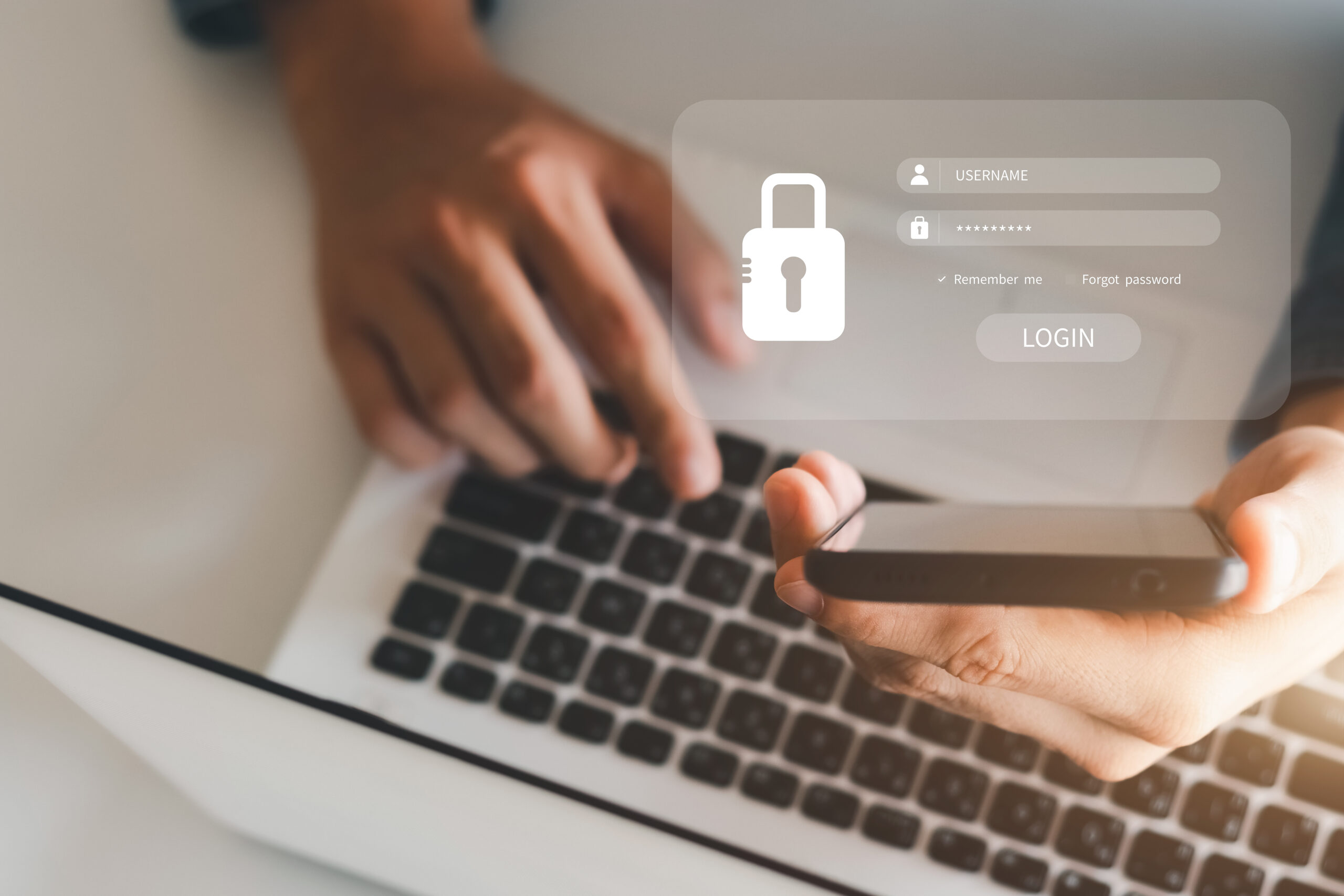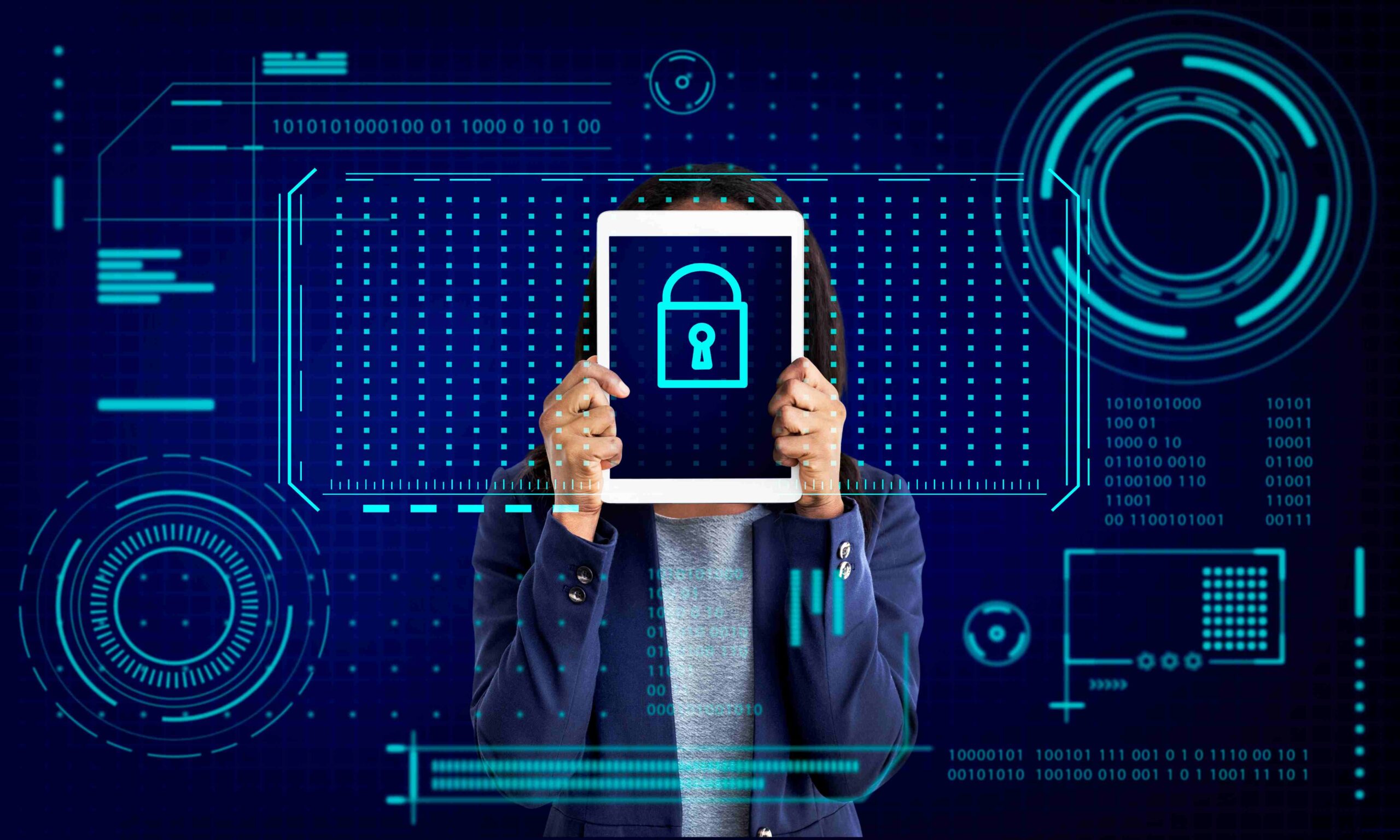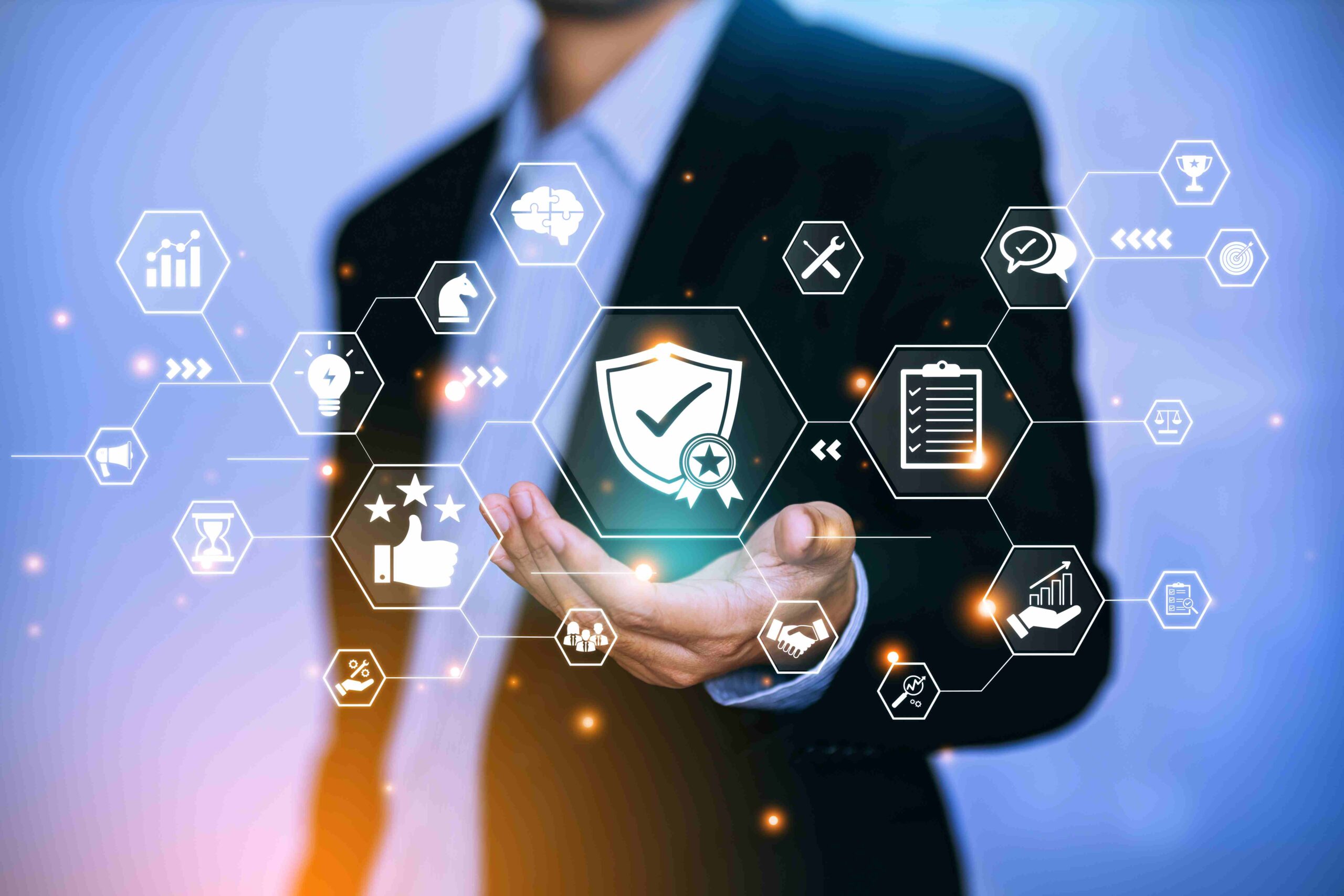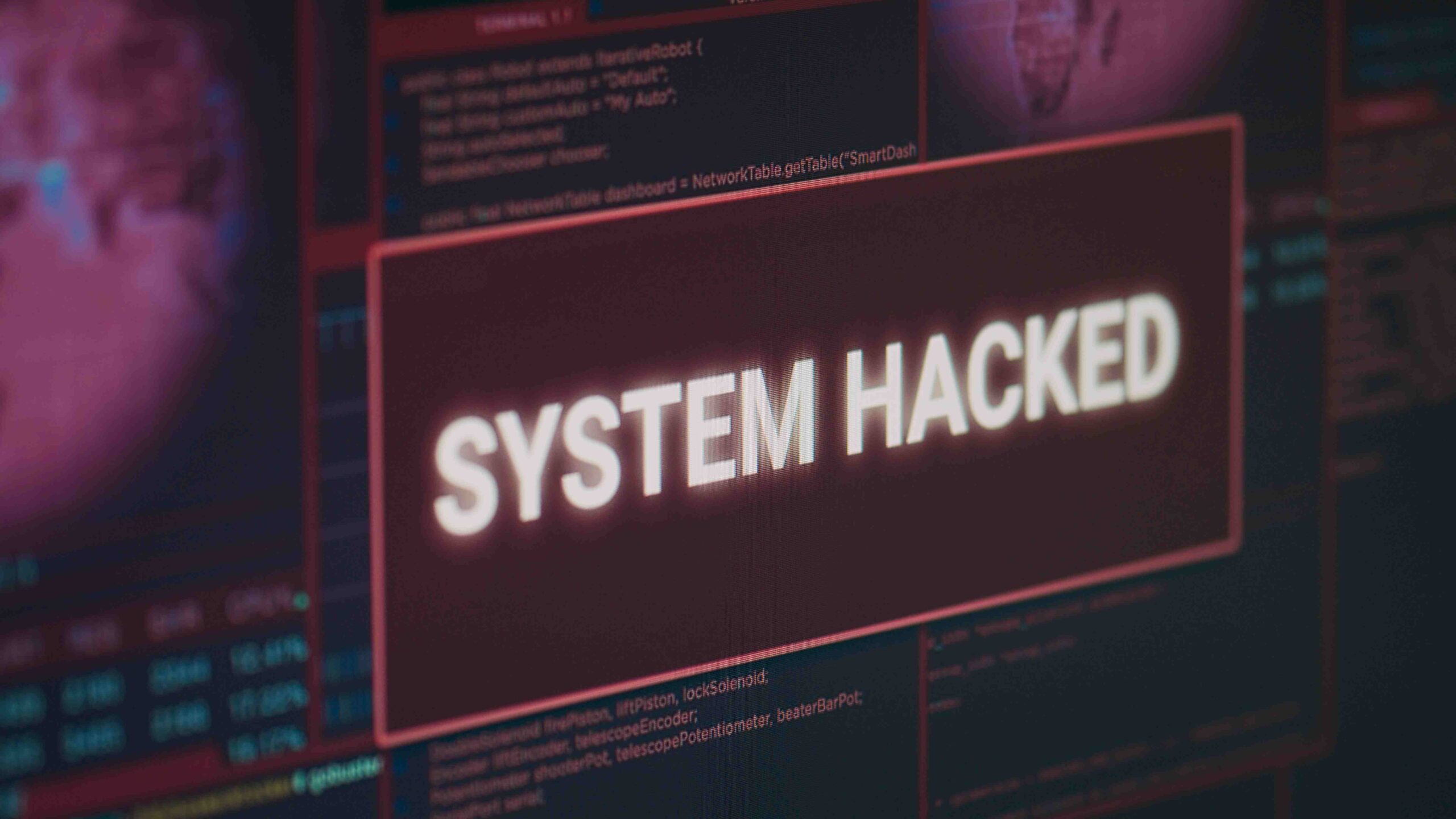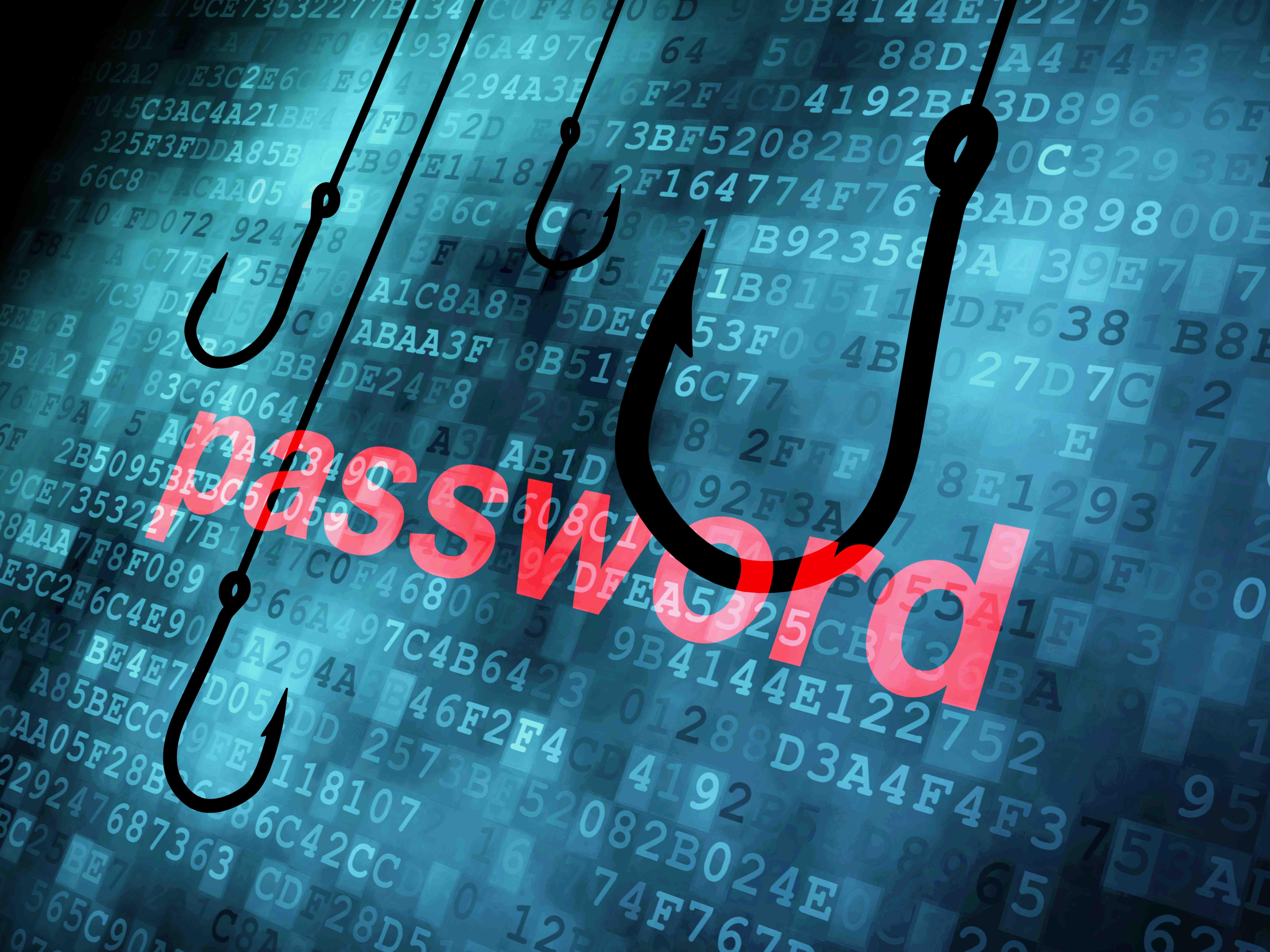Reasons to use multi-factor authentication in companies
Cybersecurity is no longer the exclusive domain of technical departments; it has become a strategic priority for all companies, regardless of their size and scope. Cyberattacks have become increasingly sophisticated, and criminals are no longer just after financial data; they are also targeting confidential information, login credentials, internal plans, and any digital trace that can be used for their own benefit.
In this scenario, protecting user accounts with a simple password is no longer sufficient:
phishing attacks,
credential theft, and password reuse make it essential to strengthen access controls.
Today, we want to discuss multi-factor authentication (MFA), an additional layer of security that can be a valuable ally in preventing
security breaches
.
Before delving into the details of how it works, it is worth mentioning Kartos, the solution for Continuous Threat Exposure Management (CTEM) developed by Enthec. Designed for businesses, Kartos enables organizations to continuously understand their exposure to potential digital risks, detect vulnerabilities, and anticipate attacks before they occur.
Multi-factor authentication is a fundamental step in this overall protection strategy, as it reduces the attack surface at one of the most critical points: access to accounts and systems.
What is MFA, and why is it so important?
To understand the need for this system, it is helpful to answer the question: What is MFA? Multi-factor authentication is an identity verification method that requires the user to present two or more pieces of evidence before accessing a digital resource. Simply put, a regular password isn't enough; you need to provide one or more additional verifications.
These tests are based on three main categories:
- Something you know: a password, PIN, or security question.
- Something you have: a code sent to the mobile phone, a physical token, or an authentication application.
- Something you are: facial recognition, fingerprint, or voice.
When we combine at least two of these categories, the chance of a cybercriminal gaining access, even if they steal the password, is drastically reduced.
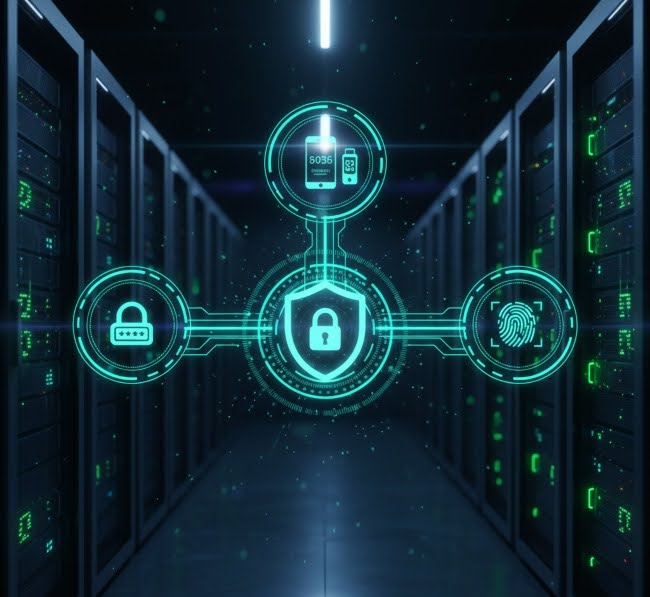
Examples of multi-factor authentication
Although it may seem like a complicated technology, the reality is that we use it almost unconsciously in our daily lives. Some common examples of multifactor authentication are:
- Access to online banking: In addition to your password, you receive a code via SMS or an authentication app.
- Corporate email: The company requests a temporary code generated by an app such as Google Authenticator or Microsoft Authenticator.
- Social networks and cloud services: You are asked to confirm access from your own mobile device.
These examples of multi-factor authentication demonstrate that its use not only increases security but has also become a natural practice, accepted by both users and organizations.
Main benefits of multi-factor authentication in companies
Implementing an MFA system not only translates into a higher level of security but also into multiple advantages that affect the business as a whole.
1. Reducing the risk of credential theft
Password theft is one of the most common techniques used in cyberattacks. With MFA, even if attackers gain access to your password, they will still need a second factor to gain access.
2. Regulatory compliance
Increasingly, data protection regulations, such as the General Data Protection Regulation (GDPR) or the National Security Scheme (ENS) in Spain, recommend or even require additional authentication mechanisms. Implementing MFA helps meet these standards.
3. Trust and reputation
Customers and partners appreciate a company's commitment to security. Adopting measures such as multi-factor authentication helps build trust and strengthen the company's image in the market.
4. Lower long-term costs
Although implementing MFA involves an investment, the truth is that preventing a security breach can save thousands of euros in fines, data loss, and reputational damage.
5. Flexibility and adaptability
Today, there are multiple MFA solutions, from SMS to advanced biometrics. This allows companies to choose the option that best suits their size, sector, and needs.
Multi-factor authentication and CTEM: a necessary combination
Multi-factor authentication is just one piece of a much larger puzzle: that of continuous threat exposure management (CTEM).. Adopting MFA protects access, but security must go further.
This is where solutions like Kartos can help your business. Kartos not only helps implement security controls but also provides a constant view of the company's digital attack surface, detecting potential weak points and facilitating a rapid response to any threat.
There's little point in implementing multifactor authentication if we don't know what other entry points might be open. That's why the CTEM approach is so valuable: it anticipates, monitors, and mitigates risks in real-time, integrating measures such as MFA into a comprehensive global cybersecurity strategy.
Common obstacles and how to overcome them
Not all companies take the step immediately. Among the most common barriers to implementing MFA are:
- Employee resistance:Some individuals view MFA as an additional step that complicates access to accounts. The key is communicating the benefits and choosing simple methods, such as mobile apps.
- Initial cost:Although there are very cost-effective solutions, some companies perceive the investment as a hindrance. However, compared to the price of a security breach, MFA is much more cost-effective.
- Integration with legacy systems:In organizations with outdated software, this can be more difficult. However, some integrators and solutions allow for gradual adaptation.
Experience shows that these obstacles can be overcome through training, awareness, and the strategic use of technology.
You may be interested in→
Cyberintelligence: what it is and what are its advantages at the strategic and tactical levels
.
The future of multi-factor authentication
Everything suggests that MFA is evolving toward even more convenient and secure methods. Biometrics, physical security keys, and artificial intelligence-based solutions will mark the next stage. There's even talk of a passwordless future, where authentication will be based on stronger, harder-to-fake factors.
For businesses, adopting MFA today is a step forward toward tomorrow's security. . It's not just a tool for the present, but the foundation on which the future of digital protection will be built.
Multi-factor authentication is not a fad or an optional extra: it is a necessity for any company that wants to protect its information, comply with regulations, and instill confidence in its customers. Integrating it into a broader security strategy, such as the one offered by Enthec's Kartos through its CTEM approach, is the best guarantee that corporate access will be protected against attacks.
In an environment where cyberattacks are becoming increasingly frequent, failing to act promptly can be costly.. If your organization still relies solely on passwords, it's time to strengthen security.
Discover how
Enthec
can help you implement proactive protection and enhance your company's security.
Cybersecurity in teleworking: 7 habits every professional needs
Working from home has become routine for millions of people in Spain. What was initially an improvised solution is now a well-established reality in many sectors.
However, this change has also introduced new risks, including an increase in cyberattacks targeting employees working remotely. Therefore, discussing cybersecurity in the context of teleworking is essential.
In this context, having tools that strengthen our protection is essential. One of them is
Qondar,
Enthec's solution designed for individuals. Qondar is not just an antivirus or a point-in-time solution: it's a Continuous Threat Exposure Management (CTEM) solution, which means it constantly monitors for risks and reduces the attack surface.
Before exploring the practical habits you can implement starting today, it's worth remembering the essentials: taking care of your digital security not only protects your personal data but also safeguards your professional image, your company, and your work environment.
1. Always keep your devices updated
It seems obvious, but it's one of the most common mistakes. We often postpone updates because they interrupt our work, without realizing that those small downloads usually contain critical security patches.
- Operating systems, such as Windows, macOS, or Linux, frequently release updates to address known vulnerabilities.
- The same thing happens with everyday applications, such as browsers, office suites, and video calling tools.
A cyberattacker only needs one crack. If you keep everything up to date, that entry point disappears.
2. Separate the personal from the professional
Teleworking has blurred the lines between home and office, but that doesn't mean we should use the same computer for everything.
- If your company gives you work equipment, use it exclusively for that purpose.
- If you use your personal computer, create different user profiles for leisure and work.
This way, if you download a suspicious file in your free time, the impact on your work information will be less. This simple habit can make a significant difference in protecting your projects and maintaining your clients' trust.
You might be interested→
How to protect your digital identity against major threats
.
3. Strengthen passwords and use two-factor authentication
Cybercriminals are aware that many users still use passwords such as "123456" or "password." And what's worse: they repeat the same password across multiple services.
- Opt for long sentences or unique combinations that include letters, numbers, and symbols.
- Use a password manager to store them safely.
- Activate two-factor authentication (2FA) whenever possible: a code that arrives on your mobile phone or email, adding an extra layer of security.
This habit, although it may seem complicated and slow, drastically reduces the possibility of unauthorized access and ensures that your
sensitive data
is not circulating on the Internet.
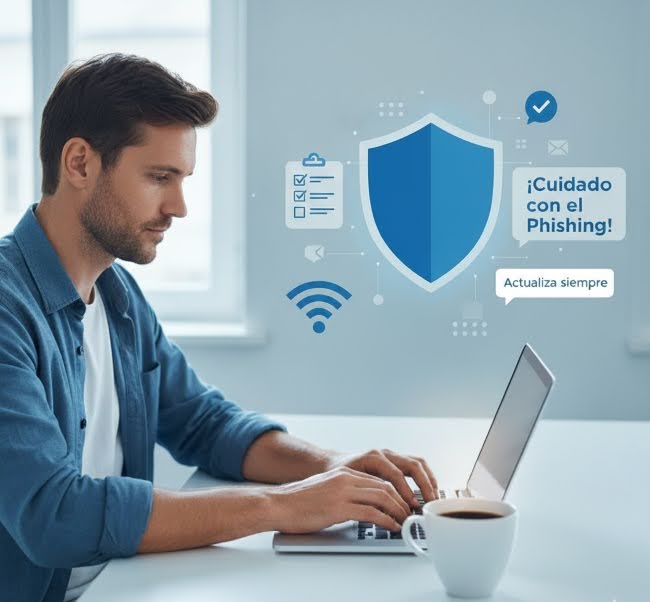
4. Be careful with public Wi-Fi networks
Working from a coffee shop may sound tempting, but the free connection you use may be exposed. According to the National Cybersecurity Institute (INCIBE), open networks are one of the most common points used by cybercriminals to intercept data.
If you have no other option:
- Use a VPN to encrypt the information.
- Avoid sending sensitive files or accessing bank accounts over these connections.
On the other hand, if you work from home, make sure your router is configured correctly, with a secure password and updated firmware.
5. Be wary of suspicious emails
Phishing remains the king of attacks. An email that appears to come from your boss or a trusted company may hide a malicious link.
To detect them:
- Look at the actual sender address.
- Check if there are spelling mistakes or suspicious alerts (“Change your password in the next 10 minutes”).
- Never download attachments you weren't expecting.
This is where solutions like Qondar excel, as they allow you to detect exposed information and prevent it from being used to design a phishing attack before it's too late.
6. Lock and protect your devices
Teleworking doesn't always happen in safe spaces. You can be at home, but you can also be in a shared or coworking space. Leaving your laptop without a password, even for "just a moment," is opening the door to trouble.
- Always activate automatic locking after a few minutes of inactivity.
- Protect your equipment with a secure password or PIN.
- On mobile phones and tablets, utilize biometric systems, such as fingerprint or facial recognition.
Physical carelessness can be just as dangerous as a cyberattack.
7. Monitor your digital footprint with advanced tools
The last habit is the least known, but it is increasingly necessary. When we work remotely, we leave digital traces constantly: platform access, cloud logs, social media posts... Cybercriminals can exploit all of this.
This is where continuous cyber surveillance comes in. It is not about being paranoid, but about having systems that monitor your actual online exposure.
With Qondar, Enthec offers just that capability: detecting in real-time if your credentials have been leaked on forums, if your email address appears in compromised databases, or if there are active threats related to your profile. This way, you not only react once the attack has already occurred, but you also prevent it before it happens.
Additional tips to strengthen cybersecurity when working remotely
In addition to the seven habits above, there are other details worth keeping in mind:
- Encrypt your disks and backups to prevent irreversible data loss.
- Disconnect external devices when you are not using them.
- Be an active participant in your company's cybersecurity culture by engaging in training and drills.
Remember: digital security depends not only on the IT department, but on every person who uses a computer connected to the Internet.
Protect your business and your peace of mind
.Cybersecurity in teleworking is not just a set of good practices; it is an investment in peace of mind and business continuity. Cybercriminals never rest, but you can be prepared.
With simple habits and the support of Continuous Threat Exposure Management solutions like Qondar, you can work remotely as securely as in a secure office.
If you want to take it a step further and protect your business and personal data, discover how
Enthec
can help you with its solutions tailored to both companies (
Kartos
) and professionals and individuals (Qondar).
Discover Qondar and see how Cyber surveillance can become your best ally in your daily teleworking routine.
Contact us
.
How to protect yourself from stalkerware with digital monitoring tools
Stalkerware is a type of spyware designed to monitor a person without their consent. . Although it sometimes disguises itself as a legitimate app, its primary goal is clear: to collect private information, including messages, locations, calls, and even passwords.
The problem is more common than it appears, and every year, more cases are reported in which individuals discover that their devices have been compromised.
In this context, preventive cyber surveillance has become a necessity, not only for businesses but also for individuals. Enthec, a company specializing in Continuous Threat Exposure Management (CTEM), has developed solutions capable of detecting and reducing digital risks before they become a problem.
For individuals, Qondar is the key tool. It is a system designed to monitor each person's digital footprint and provide alerts if suspicious behavior is detected.. In a world where digital harassment is on the rise, having an extra layer of protection can be the difference between feeling safe and living under invisible surveillance.
What is stalkerware, and why is it so dangerous?
Stalkerware is a type of spyware that is especially invasive. Unlike other malware that seeks to steal money or access corporate data, this one focuses on monitoring a person's private life.
Characteristics of stalkerware
- Concealment: It usually runs in the background, with no visible notifications.
- Full access: You can read messages, listen to calls, track GPS location, or even activate the camera and microphone.
- Easy installation: In most cases, a few minutes of physical access to the device is all that is required to install it.
The most concerning aspect is that we're not always discussing unknown cybercriminals. Often, the person who installs stalkerware is someone close to them, such as a partner, family member, or even a boss seeking to control them beyond what's allowed.
How to know if I have stalkerware
The big question for many is how to detect stalkerware on a device. Although it's not always obvious, some signs can alert us.
Most common signs
- Battery draining too quickly: Spyware consumes resources by being constantly active.
- Device overheating: This issue occurs even when the device is barely used.
- High mobile data usage: Stalkerware requires transmitting the collected information.
- Strange behaviors: unexpected restarts, crashes, or apps that appear without explanation.
If you've ever wondered, “How do I know if I have stalkerware?”, pay attention to these signs. They're not definitive proof, but they are a clue to take action.
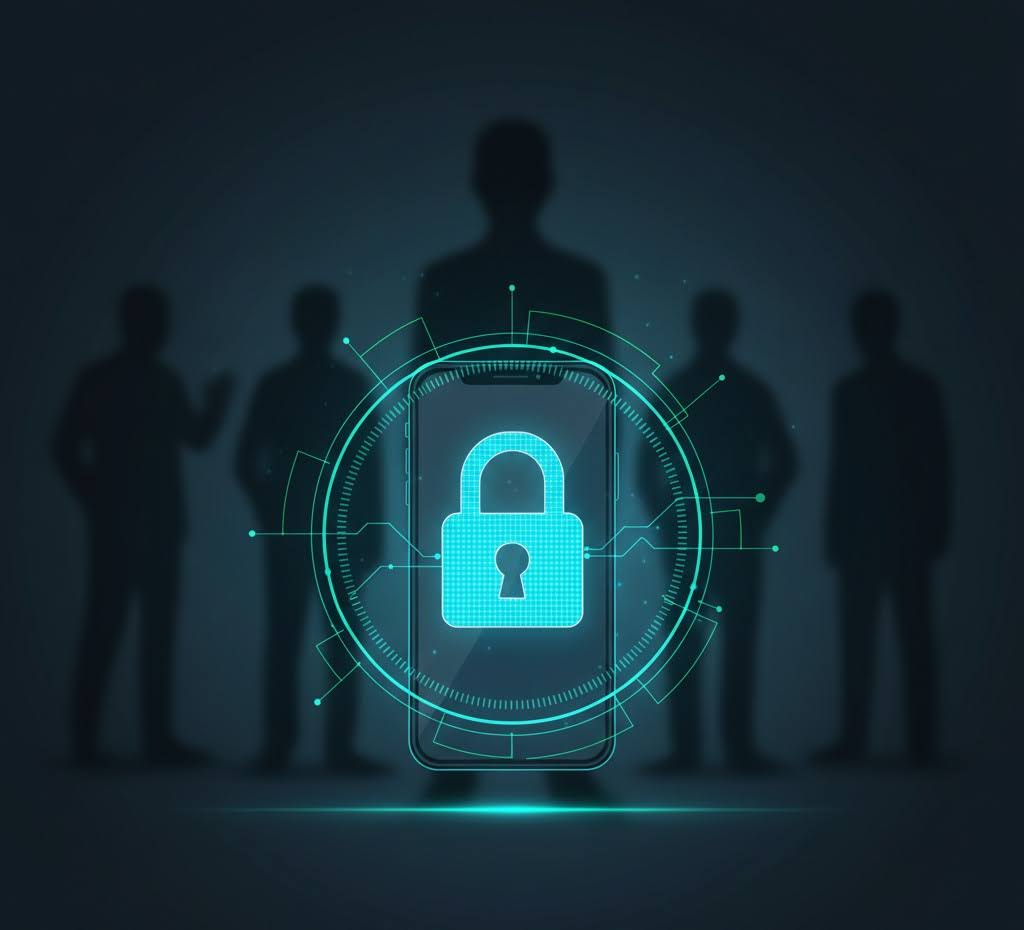
How to safely detect stalkerware
Manual detection can be tricky, as these types of programs are designed to go undetected. However, there are helpful strategies:
Check your app permissions
Many legitimate apps request access to your location, camera, or microphone. But if you see an unknown app with suspicious permissions, it's time to take action.
Install digital monitoring solution
This is where tools like Qondar come in, enabling you to monitor your digital exposure continuously. It's not just about looking for malware, but also about determining whether there are personal data leaks, unauthorized access, or traces that may provide clues to a stalker.
Keep your devices updated
Manufacturers release updates to fix vulnerabilities; . if you ignore them, you leave the door open to more uncomplicated and severe intrusions.
The role of digital monitoring against stalkerware
In the past, digital protection was limited to installing an antivirus. Today, that defense is no longer sufficient. Stalkerware evolves rapidly and can disguise itself as any other app.
The key is to anticipate threats through continuous monitoring and vigilance. The concept of Continuous Threat Exposure Management (CTEM) goes beyond simple detection: it involves monitoring the digital footprint 24/7, identifying potential risks, and reducing them before they become a real problem.
Qondar: a solution designed for people
While Kartos is Enthec's tool designed for businesses, Qondar focuses on individuals. Its purpose is clear:
- Monitor personal digital exposure.
- Detect leaks of sensitive data on the net.
- Alert about threats that may be related to the use of stalkerware or cyberbullying.
The interesting thing is that Qondar not only reacts, but offers preventive information, . which means you can find out if your email, passwords, or social profiles have been compromised before someone uses them to spy on you.
In a context where digital harassment and unwanted surveillance are becoming increasingly frequent, having this type of service provides genuine peace of mind and security.
Good practices to reduce risk
While having tools like Qondar is essential, there are also practical steps you can take in your daily life:
Strengthen your passwords
Use long, unique combinations for each account. Avoid repeating the same password across different services.
If you want to delve deeper into this topic, we recommend our publication → How to manage business passwords and credentials easily and securely to avoid online threats
Activate two-step verification
Even if someone obtains your password, they will still need a second factor of authentication to gain access.
Check your devices
Clean up your apps periodically and delete any you don't recognize or use.
Talk about cybersecurity
Cyberbullying is still a taboo subject. Sharing information with family and friends helps you be more prepared.
What to do if you suspect stalkerware
If you detect clear signs that your device may be compromised, it is recommended to:
- Disconnect the internet temporarily to cut off data transmission.
- Make a backup of your most essential files.
- Reset the device to factory settings.
- Use monitoring tools like Qondar to ensure you are not exposed again.
Digital security starts with you
Stalkerware isn't a distant problem or exclusive to celebrities. Anyone can be a victim, which is why it's crucial to be informed and have advanced protection tools.
Today, digital security is no longer limited to installing an antivirus. It requires constant monitoring and CTEM solutions, such as those offered by Enthec with Qondar. If you want to feel more secure in your digital life and prevent third parties from accessing your privacy, taking the step toward this type of protection is an investment in peace of mind.
Want to learn more about how Qondar can help you protect your digital privacy? Visit Enthec and learn how to safeguard your personal information from threats like stalkerware today.
ClickFix: What to do if you click on a malicious link
We've all experienced that moment of doubt. You're checking your email, browsing social media, or even chatting at work, and suddenly a seemingly harmless link pops up. You open it without giving it much thought... and instantly realize something's off. That's when the question arises: what do I do now?
In this article, we are going to talk about ClickFix,a term that refers to the immediate actions you should take after clicking on a malicious link. We'll give you practical advice and explain how solutions like Qondar, developed by Enthec, can help you reduce your risk and stay ahead of these threats.
What exactly is a ClickFix?
A ClickFix is the set of emergency measures you should take when you have already made the mistake of clicking on a fraudulent link.. It isn't the time to lament, but rather to react quickly to minimize damage. The longer you delay acting, the easier it will be for attackers to exploit your device or your data.
Instead of panicking, the most helpful thing is to have a clear response protocol in place. . You don't have to be an expert to apply it: with a little organization and the right tools, you can turn a scare into an anecdote without significant consequences.
The absolute risk of a malicious click
A wrong click can have several consequences:
- Malware downloads onto your device, which can slow it down, remotely control it, or steal information.
- Phishing occurs when the fraudulent website imitates an official page (a bank, a social network, an online store) and asks you for credentials or sensitive data.
- Exposure of personal data, which can then be sold on dark web forums.
According to the Global Risks Report 2025, by the World Economic Forum, cyber threats are already among the top issues worrying both businesses and citizens in the short term, and phishing attacks remain the most common entry point.
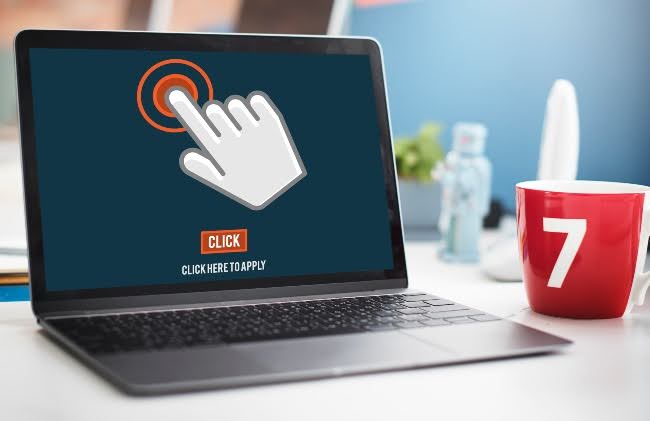
ClickFix Quick Start Guide: Step-by-Step Instructions
Once you've clicked on a malicious link, the most important thing is not to get blocked. Order is key, because every action helps cut off potential avenues of attack and protect your personal information.
1. Disconnect the device
If you suspect that the link has downloaded something or that the page is not trustworthy, the first thing is to disconnect the device from the internet.. This prevents the malware from communicating with the attacker.
2. You do not provide data
If you have reached a website that asks for credentials, don't fill anything in.. If you did, immediately change the passwords for those services from another secure device.
3. Scan the system
Run updated antivirus software and use specific malware removal tools. It's important not to let time pass.
4. Review access and suspicious activity
Check your email, social media, and bank accounts. Attackers often try to access your most common services quickly.
5. Inform and ask for help
If you're using your company computer, notify your IT or cybersecurity team. If it's a personal device, seek expert advice if you detect any anomalies.
Beyond reaction: the importance of prevention
Applying a ClickFix is essential when you've already made the mistake, but the important thing is not to get to that point. Cybersecurity isn't built in a single step, but with continuous monitoring. This is where we can count on solutions like Qondar, by Enthec.
Qondar is designed for individuals who want to keep their exposure to digital threats under control.. It is a Continuous Threat Exposure Management (CTEM) tool that constantly analyzes the data circulating online and determines whether cybercriminals can exploit it. So, instead of reacting when the damage has already been done, you can anticipate and reduce risks.
Think about it: isn't it more relaxing to browse knowing someone is watching over you?
Why is digital exposure a growing problem?
We're constantly connected. From online shopping to banking and communicating with friends and family, everything happens online. That means your digital identity is continuously at stake.
Cybercriminals don't need a sophisticated attack to compromise you. All it takes is:
- A password leaked on a forum.
- An email address exposed in an old database.
- Or a simple click on a malicious link.
In fact, according to a Verizon study (Data Breach Investigations Report 2025), 60% of data breaches are due to some human factor, whether error, breach of trust, or social engineering.
Qondar against malicious links
The advantage of Qondar is that it doesn't wait for you to make a mistake. Its approach is proactive: it continuously monitors your digital footprint and alerts you if your data is at risk.
For example:
- If your email is breached, you'll receive a warning to change your password before attackers can exploit it.
- If your personal information moves in suspicious spaces on the network, Qondar detects it.
- If there is an increase in impersonation attempts linked to your name, the platform will flag it.
This way, even if you fall for a fraudulent link one day, the impact may be much smaller because a continuous surveillance system will protect you.
Practical tips to reduce risks in everyday life
In addition to having a ClickFix plan and monitoring tools like Qondar, there are simple habits you can apply daily to minimize the chances of falling into a malicious link. . They don't require advanced technical knowledge, just a little attention and perseverance.
Learn to identify suspicious links
Always check the URL before clicking. Attackers often use addresses that mimic the real thing by changing a letter or adding a character.
Activate two-step authentication
Even if your credentials are leaked, a second authentication factor can block access.
Keep your devices updated
Many threats take advantage of old vulnerabilities. Installing updates is a simple but very effective measure.
Use strong and unique passwords
Never repeat the same password across multiple services. Password managers are great allies.
A ClickFix is the immediate reaction to stop the damage of a malicious link,. but true peace of mind comes when you combine that reaction with active prevention. And that's where tools like Qondar excel, because they allow anyone to continuously manage their exposure to threats and reduce risks in their daily digital lives.
You might be interested→ 9 healthy digital habits that will protect you from identity theft and leaks.
Take the next step
If you've ever felt unsure of what to do after a suspicious click, it might be time to think about more comprehensive protection.. At Enthec, we work to ensure that both companies, with Kartos, and individuals, with Qondar, can live their digital lives with confidence and security.
Find out how Qondar can help you to stay ahead of cybercriminals and turn your ClickFix into more than just a patch: into a continuous protection strategy.
Zero Trust: What it is and why it's essential for your business
Cybersecurity is no longer something that can be left on the back burner. Today, any organization, large or small, can become a target of an attack.
From data theft to unauthorized access to critical systems, risks are increasingly varied and sophisticated. In this context, the Zero Trust model has established itself as one of the most effective approaches to protecting companies against current and future threats.
Before going into detail, it is worth highlighting that at Enthec, we have been working for years on solutions that help organizations strengthen their digital security. . Kartos, our enterprise cyber surveillance tool, is designed to offer Continuous Threat Exposure Management (CTEM). With Kartos, companies can identify vulnerabilities in real time, analyze risks, and stay ahead of cybercriminals.
What is Zero Trust
The term Zero Trust, also known as "zero trust," refers to a security model based on a straightforward premise: Don't trust anything or anyone by default, regardless of whether they are inside or outside the corporate network.
This means that every user, device, or application that wants to access a system must validate their identity and prove that they have permission to do so; it's not enough to be on the network or have a saved password; each request is evaluated as if it came from a potentially hostile environment.
Basic principles of the Zero-Trust model
- Continuous verification:Initial authentication isn't enough. Each access requires real-time verification.
- Least possible privilege: Users and devices are only given the permissions strictly necessary to perform their task.
- Microsegmentation: Networks and systems are divided into smaller segments, reducing the attack surface.
- Total visibility: Everything that happens on the network must be constantly monitored.
Why is it essential for your company
The importance of Zero Trust is best understood when we analyze how threats have evolved.. Today's cyberattacks are far more sophisticated than they were a decade ago. A perimeter firewall or simply relying on employees to act in good faith is no longer enough.
Adapting to a hybrid and remote environment
Many companies have adopted hybrid or fully remote work models. This means employees connect from personal devices, home networks, or even from public Wi-Fi networks such as those found in coffee shops and airports. The traditional security perimeter has disappeared, blindly trusting that whoever accesses the network is legitimate can be fatal.
The zero-trust approach allows every connection to be evaluated, regardless of where it originates.
Reducing the impact of incidents
According to data from IBM (Cost of a Data Breach Report 2025), the average cost of a data breach exceeds $4.4 million globally. With a Zero Trust model, even if an attacker manages to infiltrate, their ability to move within the network is limited by microsegmentation and least privilege controls.
In other words, the impact of an incident is drastically reduced.
Compliance
Increasingly, cybersecurity regulations and standards, such as the GDPR in Europe and the NIST framework in the United States, recommend implementing Zero-Trust security models to ensure the protection of sensitive data. Adopting them not only helps protect your company but also facilitates legal compliance.
Zero-Trust and CTEM: A Necessary Combination
Zero-Trust is a solid theoretical framework, but to apply it realistically, companies need tools that enable them to maintain continuous visibility and control over their risks, for example, Enthec's Kartos.
Kartos acts as an active cyber surveillance layerconstantly monitoring potential attack vectors. It focuses on Continuous Threat Exposure Management (CTEM), an approach that prioritizes identifying and mitigating vulnerabilities before attackers can exploit them.
By integrating Kartos into their zero-trust strategy, organizations can:
- Detect incorrect configurations that facilitate unauthorized access.
- Monitor the exposure of leaked credentials on the dark web.
- Control vulnerabilities in external suppliers or partners.
- React quickly to any sign of intrusion.
In short, the model of zero-trust gains strength when combined with a system that provides actionable, up-to-date intelligence at all times.
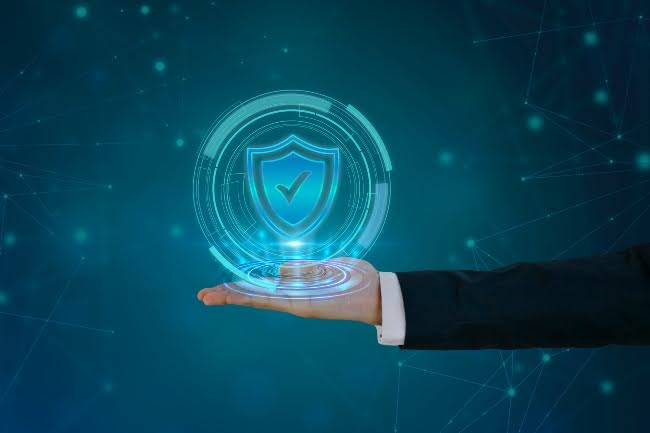
Challenges and benefits of implementing a Zero-Trust model
Adopting a zero-trust security strategy involves a change in mentality and processes.. As with any technological transformation, companies encounter certain obstacles at the outset, but the benefits gained from overcoming them are key to business continuity.
Initial challenges
- Resistance to change: Many IT teams are accustomed to perimeter models and struggle to adapt to tighter control.
- Initial investment: Although it pays off in the long term, implementing a Zero Trust security model requires financial and human resources.
- Technical complexity: Segmenting networks, managing identities, and ensuring multi-factor authentication isn’t always easy.
Clear benefits
- Greater global security: the possibility of internal and external attacks is drastically reduced.
- Granular access control: Each user only accesses what he or she really needs.
- Better incident response: Attackers encounter more barriers and fewer opportunities to move within the system.
- Scalability: adapts to cloud, hybrid, and remote environments without losing efficiency.
Case Studies: How Zero Trust is Applied
The zero trust model is not exclusive to large multinationals or highly regulated sectors. It can be applied in various industries and across different company sizes, with results tailored to the needs of each individual.
Financial sector
Banks and insurance companies handle extremely sensitive information. Implementing zero-trust security ensures that even employees with authorized access are limited in their permissions, thereby reducing the risk of internal fraud.
Healthcare sector
In hospitals and clinics, where medical records are a frequent target of cybercriminals, the Zero-Trust model protects every access to information systems, ensuring that only authorized personnel can consult them.
You might be interested in our publication→ Cybersecurity in Hospitals: How Continuous Monitoring Protects Sensitive Patient Data.
SMEs and startups
It's not just large corporations that should be concerned. Small businesses can also benefit from Zero Trust security, especially when working with external vendors or handling customer data. With solutions like Kartos, implementation is much more accessible.
Digital security cannot be based on blind trust. Zero-Trust is not a fad, but a necessity for any company that wants to protect its data, comply with regulations, and stay ahead of cybercriminals.
Adopting a zero-trust model may seem challenging, but the medium- and long-term benefits far outweigh the initial efforts. And with tools like Kartos by
Enthec, the transition to this approach is significantly easier, providing accurate and real-time information on the organization's exposure.
Don't wait for an incident to occur to strengthen your security. Start building a Zero-Trust-based protection model today and safeguard your business's future.
Do you want to discover how to apply the philosophy of Zero-Trust in your company with the support of Kartos?
Contact Enthec and request a personalized demo.
What you should keep in mind before purchasing cyber insurance
Cybersecurity is no longer an issue exclusive to large corporations or technology companies. Any organization, regardless of its size, can be the target of an attack. Cyber insurance has ceased to be an unknown concept and has become an essential tool in business risk management.
However, taking out cyber insurance isn't as simple as signing a policy and forgetting about it. There are several aspects worth analyzing before taking the plunge, and not all coverages are equally suited to each company's needs.
In this context, Enthec's Continuous Threat Exposure Management (CTEM) solution, Kartos, is beneficial. Kartos enables companies to consistently identify their actual vulnerabilities and how they are perceived externally, providing an accurate representation of their exposure. In addition to helping protect organizations themselves, this tool is also used by insurers to assess the viability and terms of cyber insurance policies, making it a strategic ally for both companies and insurance companies.
What is cyber insurance, and why is it booming?
Cyber insurance is a policy that protects organizations against damages arising from cybersecurity incidents.. Unlike traditional insurance, it does not cover fire, physical theft, or material damage, but rather situations such as:
- Ransomware attacks that paralyze activity.
- Data leaks of sensitive information about customers or employees.
- Digital identity theft that affects a company's reputation.
- Legal expenses and penalties arising from non-compliance with regulations such as the GDPR.
Interest in this type of insurance has increased in recent years for one apparent reason: The frequency and average cost of cyberattacks have skyrocketed. . According to the Allianz Risk Barometer 2025 report, 38% of European companies consider cybercrime to be the most significant risk to their business, surpassing concerns about supply chain disruptions or natural disasters.
Keys to keep in mind before purchasing cyber insurance
Not all companies need the same policy, nor do all insurers offer the same coverage. Before signing, it's a good idea to review some key points:
1. Actual level of risk exposure
Cyber insurance is no substitute for preventive measures. In fact, most insurers thoroughly review an organization's cybersecurity status before accepting a policy. Tools like Kartos are crucial here, as they provide objective data to demonstrate a company's exposure and how it is managed.
2. Scope of coverage
Not all policies include the same things. It's essential to check if the following are covered:
- System recovery costs.
- Expenses arising from reporting incidents.
- Legal assistance in case of sanctions.
- Compensation for loss of profits.
Cyber insurance for businesses must be tailored to the sector in which they operate, as a technology company is not the same as a law firm or a logistics SME.
3. Exclusions and limitations
It's a good idea to read the fine print. Some insurers exclude damage caused by employees, incidents resulting from poor security practices, or state-directed attacks. Evaluating these limitations is essential to avoid surprises when coverage is genuinely needed.
4. Prerequisites
Many insurers require the implementation of basic cybersecurity measures: backups, contingency plans, employee training, or data encryption. Kartos can be a strategic ally in meeting these requirements and maintaining them over time, as it continuously monitors the organization's security.

Kartos' role in cyber insurance contracting
In addition to its primary function as a cyber surveillance and CTEM tool, Kartos brings added value to the insurance sector . by providing an accurate view of an organization's digital security status, making it easier for both organizations and insurers to assess risks.
- For companies: helps identify weak points before negotiating the policy, which can translate into better terms and tighter premiums.
- For insurers: it becomes a reliable instrument for measuring your clients' exposure and deciding the scope of coverage.
In short, having a solution like Kartos not only strengthens protection against cyberattacks but also facilitates access to cyber insurance tailored to the unique needs of each organization.
Cyber insurance and regulatory compliance
Another aspect to consider is the relationship between cyber insurance and legal obligations. The General Data Protection Regulation (GDPR) establishes very high penalties in case of escape or misuse of personal data.. Although cyber insurance may cover some of these penalties or associated legal expenses, the policy does not exempt the company from liability.
Here again, prevention is key. Implementing solutions, such as continuous risk management, as those offered by Enthec, is the best guarantee for minimizing the impact of an incident and demonstrating due diligence to regulatory bodies.
Cyber insurance for companies vs. cyber insurance for individuals
Although the term is usually associated with the corporate sphere, there is also the figure of cyber insurance for individuals.. In this case, the policies focus on protecting digital identity, preventing fraud in online purchases, or covering losses resulting from password theft.
From Enthec, the solution Qondar is designed explicitly for this profile, offering active monitoring of each person's digital footprint. In this way, the user has an additional layer of security that complements what individual insurance can offer.
Cyber insurance has become an essential cybersecurity tool for managing risk in the digital environment. However, it's not enough to take out the first available policy. Before deciding, it's essential to assess your actual exposure, review coverage, understand limitations, and, above all, have objective data that support the company's situation.
This is where Kartos, Enthec's solution, becomes a strategic ally. Its ability to continuously monitor digital security not only strengthens the organization's protection but also facilitates access to more precise and reliable cyber insurance.
In a world where cybercrime is growing at an unstoppable pace, the combination of active prevention and cyber insurance is the best strategy to sleep peacefully.
Do you want to know how Kartos can help you protect your business and make it easier to purchase your cyber insurance? Contact Enthec and take the first step towards stronger and more transparent digital security.
Zero-day attacks: How to detect them before they affect your organization
Computer security has become a fundamental pillar for any business. Cyberattacks are becoming increasingly sophisticated, and one of them is of particular concern: a zero-day attack.
This is a type of threat that exploits unknown vulnerabilities in software or systems, even before the manufacturer is aware of them. This makes it a formidable enemy to predict and, therefore, very damaging if not addressed promptly.
In this context, having tools that allow us to anticipate potential threats is a necessity. Kartos, Enthec's cyber surveillance solution,has been designed precisely to address this need. It enables companies to proactively identify risks, continuously monitor their attack surface, and minimize the window of exposure to potential intrusions.
What exactly is a zero-day attack?
A zero-day attack exploits a vulnerability that has not yet been detected or corrected by the developer of the affected software. The term "zero-day" refers to what we also know as "release day," referring to software or systems that have not yet been patched for vulnerabilities.
Meanwhile, cybercriminals can exploit this weakness to their advantage, making this type of attack one of the most critical threats to businesses of all sizes.
Learn more about potential vulnerabilities and how to protect your business →Real-time vulnerability management: a step forward in cybersecurity.
Zero-day attack: main features
Some of the characteristics that make zero-day attacks so dangerous are:
- They are invisible in their early stages: Because they are not documented, traditional security systems often overlook these types of threats.
- They exploit popular software: browsers, operating systems, email applications, or mass-use tools.
- High effectiveness: They can bypass antivirus or firewalls until an official fix is released.
- Unpredictable impact: ranging from data theft to total control of the system.
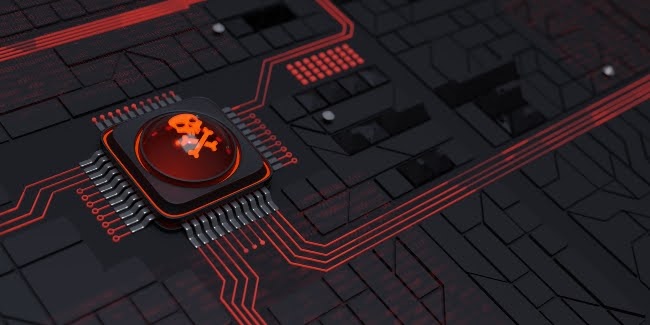
How to detect a zero-day attack before it's too late
The big question is: If the attack exploits an unknown vulnerability, how can a company get ahead? There's no single answer, but there are several preventive strategies that can make a difference:
1. Constant cyber-surveillance
The key is to monitor the entire digital ecosystem of the organization continuously. This includes not only internal systems, but also external exposure on the internet and the dark web, where exploits are often marketed before they are made public.
This is where solutions like Kartos provide differential value by offering constant analysis of the attack surface.
2. Behavior-based detection
Even if a zero-day attack isn't registered in antivirus databases, its behavior can give it away. Analysis tools that examine traffic patterns, anomalous access, or unusual process execution are crucial for identifying suspicious activity.
3. Patch and update management
Although a zero-day attack exploits flaws that have not yet been fixed, keeping systems up to date reduces the window of opportunity for attackers. The sooner a correct patch management is implemented, the lower the exposure.
4. Reduction of the attack surface
A fundamental principle of cybersecurity is limiting vulnerabilities. This involves eliminating unnecessary access, segmenting networks, reviewing configurations, and strengthening passwords to enhance security. The smaller the exposed surface, the lower the risk of exploitation.
Why should your organization take zero-day attacks seriously?
A zero-day attack is not only a technical issue; it can also result in economic losses, reputational damage, and legal sanctions if it compromises personal or sensitive data.
In this sense, anticipating is the only viable strategy,. not about waiting for the following security patch, but rather adopting an active surveillance model that allows for the detection of anomalous movements and immediate action.
Kartos' contribution to defending against zero-day attacks
At Enthec, we developed Kartos as a Continuous Threat Exposure Management (CTEM) solution designed for companies that want to stay ahead of the curve. Its unique value lies in its ability to:
-
- Continuously monitor the digital attack surface.
- Detect potential exposures before cybercriminals can exploit them.
- Generate early warnings that allow security teams to prioritize and act quickly.
- Provide clear reports and actionable information for decision-making.
In this way, Kartos becomes a key and strategic ally in mitigating the impact of a potential zero-day attack, closing gaps before they can be exploited.
A zero-day attack can occur at any time, and by its nature, it is impossible to guarantee a 100% defense. However, the difference between suffering a devastating impact and minimizing the risks lies in prior preparation.
Having cyber surveillance solutions allows organizations to stay ahead of cybercriminals, detect anomalies before they escalate, and minimize their exposure.
Cybersecurity can no longer be viewed as an expense, but rather as a strategic investment in business continuity.
Want to learn how Kartos can help your business reduce the risk of a zero-day attack? Contact Enthec and request a personalized demonstration.
AI-powered phishing and its impact on personal data security
Digitalization has brought us significant advantages: convenience, speed in processing, and immediate access to information. But, at the same time, it has also opened the door to new forms of cybercrime.
One of the most worrying is AI phishing, an evolution of the classic scam that leverages increasingly sophisticated technological tools to deceive users and businesses.
Before delving into how this type of attack works and what impact it can have on our security, it's worth discussing how we can protect ourselves. This is where Qondar comes in, a solution developed by Enthec that enables anyone to monitor and manage their exposure to online threats continuously. Qondar isn't just a simple antivirus or a fraudulent email blocker: it's a Continuous Threat Exposure Management (CTEM) tool, designed to detect risks in real time and help us make decisions before it's too late.
What is AI phishing?
AI phishing is a deceptive attempt in which cybercriminals impersonate legitimate entities (banks, public administrations, e-commerce platforms, or even coworkers) to obtain sensitive information such as passwords, banking details, or personal documents.
Until recently, phishing was relatively easily detected by details such as spelling mistakes, unconvincing messages, or suspicious email addresses.. However, with the advent of artificial intelligence, the landscape has undergone significant changes.
Nowadays, attackers use algorithms capable of generating perfectly worded messages that are personalized and even adapted to the victim's communication style. . In addition, they rely on synthetic voice systems and the creation of false images (deepfakes) to give more credibility to their deceptions.
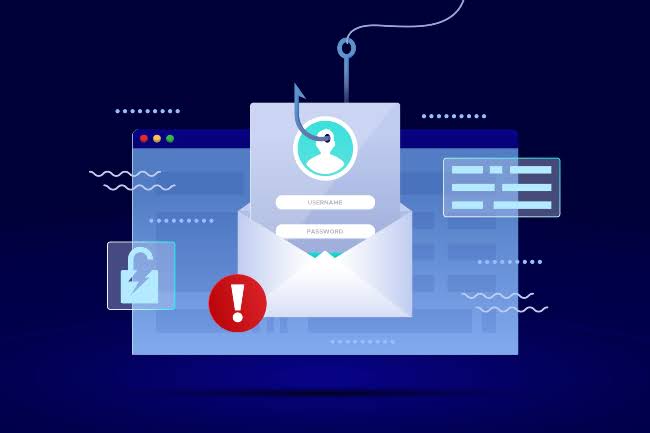
The impact of AI phishing on personal data
The impact of AI phishing goes far beyond the simple loss of money in a fraudulent transfer. Cybercriminals are after something much more valuable: our personal data.
With them, they can:
- Steal identities and open bank accounts or apply for loans on our behalf.
- Access online services and gather even more information to expand the fraud.
- Carry out digital blackmail, especially when they manage to obtain photos, documents, or private conversations.
- Commercialize our data in clandestine forums on the dark web.
The primary difference compared to previous years is the exponential growth in the sophistication of attacks, mainly due to the increased use of AI.
You may be interested in→The relevance of artificial intelligence in cybersecurity
Why is AI phishing more dangerous?
Extreme customization
AI tools can analyze public information from social media or websites to create messages that appear to have been written by someone close to the victim.
Scalability
A cybercriminal no longer needs to spend hours composing each email. AI automates the process and allows thousands of attempts to be launched in a matter of minutes, each with a high level of credibility.
Multichannel
Phishing no longer comes only through email. With the help of artificial intelligence, attackers are using SMS, automated phone calls, social media messages, and even deepfakes in video calls.
Difficult detection
By improving the quality of the deception, traditional filters and human perception have a harder time identifying fraud. AI-powered phishing becomes more camouflaged and goes undetected.
How to protect yourself from phishing with AI
The good news is that, although attacks are more sophisticated, some solutions and habits allow us to protect ourselves.
Basic measures
- Be wary of urgent messages that ask for personal data or passwords.
- Check email addresses and links before clicking.
- Use two-step authentication whenever possible.
- Update passwords frequently and avoid repeating them in several services.
Advanced Measures: The Importance of CTEM
In addition to personal habits, it is increasingly necessary to have tools that monitor our internet exposure. . This is where Qondar comes in, the solution Enthec has designed for individuals.
Qondar acts as a digital radar that detects if our data has been leaked, if it's circulating in trading forums on the dark web, or if we're exposed to phishing campaigns. This allows us to anticipate threats instead of reacting late, when the damage has already been done.
AI Phishing and the Role of Enthec
Enthec, a company specializing in cyber-surveillance, has developed two leading solutions:
- Kartos, designed for companies seeking to protect themselves against digital risks.
- Qondar, designed for individual users looking to enhance their personal security.
Both products are framed within the concept of Continuous Threat Exposure Management (CTEM), which represents a step forward compared to traditional solutions.
While most security programs react once the attack has occurred, the CTEM philosophy focuses on monitoring and reducing the exposure area at all times, anticipating possible incidents.
AI-powered phishing has elevated digital scams to a level of sophistication never seen before. We're no longer talking about poorly written emails or easy-to-detect tricks, but about personalized, credible, and difficult-to-identify attacks.
The direct consequence is a growing risk to the security of our personal data, which can end up in the wrong hands and be used for fraudulent purposes.
In this context, prevention is the most effective strategy. Adopting responsible habits when using technology is essential, but having digital surveillance solutions like Qondar can be a decisive advantage.
Protect your digital identity today with Qondar and stay one step ahead of phishing with AI.
Offensive AI: How to Protect Yourself from Its Attacks
Artificial intelligence has ceased to be a science fiction concept and has become a tool present in the daily lives of businesses and users. However, its development is not always used for legitimate purposes. Offensive AI is already a reality and is changing the rules of the game in the world of cybersecurity.
This type of technology is used to automate and sophisticate cyberattacks,allowing attackers to work with greater speed, precision, and adaptability. From tailored phishing attacks to developing harder-to-detect malware, offensive AI multiplies the scale and impact of threats.
Before discussing how to prevent these types of risks, it is essential to emphasize that prevention and early detection are more crucial than ever today. This is where comes into play tools like Kartos, the Continuous Threat Exposure Management (CTEM) solution developed by Enthec.
Kartos enables organizations to continually monitor their level of exposure to attacks, including those driven by offensive AI, and take action before it's too late.
What is offensive AI, and why is it so dangerous?
When we talk about offensive AI, we refer to the use of algorithms and artificial intelligence models to attack systems, networks, or users.. Unlike traditional cyberattack techniques, offensive AI can learn and improve itself with each attempt, adapting to the defenses it encounters.
Some examples of AI cyberattacks include:
- Hyper-targeted Phishing: messages tailored to each victim, with language and style that perfectly mimic real contacts.
- Vulnerability Automation: AI can analyze thousands of systems in seconds to find weaknesses.
- Malware polymorphic: Malicious programs that constantly change their code to avoid being detected by antivirus software.
- Deepfakes and content manipulation: Fake videos, audios, and images that can fool even trained professionals.
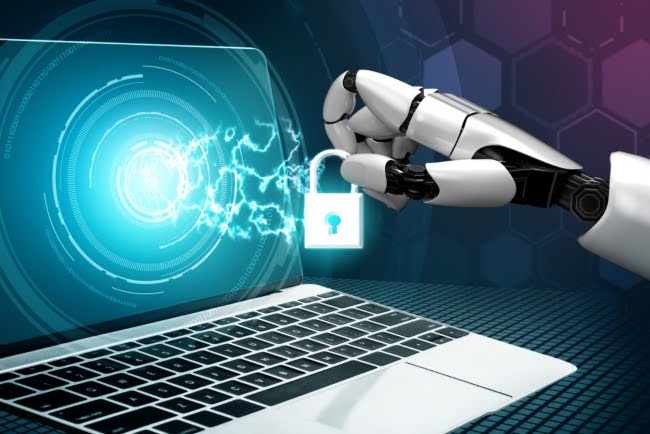
How an AI cyberattack works
Although it may seem like a highly technical process, the operation of a cyberattack with artificial intelligence follows a recognizable structure:
- Gathering information: AI crawls social media, forums, and leaked databases to gather information about the victim or the organization.
- Vulnerability analysis: Using mass scanning techniques, AI identifies potential entry points.
- Attack design: A personalized plan is developed to optimize the probability of success.
- Automated execution: The attack is launched, adjusting in real time according to the defenses it encounters.
- Further learning: AI records the results and uses them to refine future attempts.
This ability to learn and improve continuously makes offensive AI a challenge that cannot be combated with static security measures.
You might be interested→AI vs. AI: The duel between artificial intelligences in the cybersecurity war
Strategies to protect yourself against offensive AI
The key to protecting yourself against this threat is to anticipate and reduce the exposure.. This is where concepts such as CTEM come into play, which proposes continuous risk monitoring and management.
1. Full visibility of your digital footprint
You can't protect what you don't know. Maintaining an up-to-date inventory of exposed digital assets (domains, subdomains, corporate emails, etc.) is the first step. Tools like Kartos perform this monitoring continuously, alerting you to new exposures.
2. Simulation and testing of attacks
The Red Team exercises and controlled simulations allow you to understand how your organization would react to a real attack. This includes testing specific offensive AI scenarios to uncover vulnerabilities before attackers do.
4. Real-time monitoring and response
It's not enough to have firewalls and antivirus software. You need to have detection and response systems (EDR/XDR) that analyze behaviors, not just known signatures.
The difference between protecting a company and protecting an individual
Although offensive AI techniques can affect anyone, the level of risk and the approach to protection differ.
- In companies:the main objective is to protect sensitive data and critical operations. Solutions like Kartos allow centralized and continuous control of all digital assets, minimizing exposure.
- In individuals: protection is based on preventing identity theft, impersonation, or fraudulent economic activity. To achieve this, Enthec offers Qondar, a cybersecurity tool designed for individuals who need to know if their personal data has been exposed or is being misused.
How Kartos fits into the fight against offensive AI
Kartos is not just a simple alert system. It is a platform that integrates the CTEM philosophy, providing:
- Dynamic inventory of exposed assets.
- Continuous analysis of threats and vulnerabilities.
- Early warnings of potential incidents, including those originating from offensive AI.
- Centralized panel to make quick decisions based on accurate information.
By incorporating this approach, companies not only react to attacks but also prevent risk scenarios before they occur.
The future of offensive AI and cybersecurity
Everything points to the fact that AI cyberattacks will continue to grow in number and complexity.. This doesn't mean that defense is lost, but it does mean that it will require constant evolution in protection strategies.
The combination of advanced technology, adaptive processes, and continuous training will be the foundation for mitigating the impact of these threats. Companies like Enthec, with solutions like Kartos and Qondar, are already leading this change.
The Offensive AI is changing the way we understand cybersecurity. . Its ability to learn, adapt, and scale attacks demands a proactive and dynamic approach to defense.
Whether you are a company that manages critical information or an individual concerned about your privacy, having tools for Continuous Threat Exposure Management is a necessity.
Do you want to know how to protect your organization from cyberattacks with artificial intelligence? Find out how Kartos can give you the edge you need.


